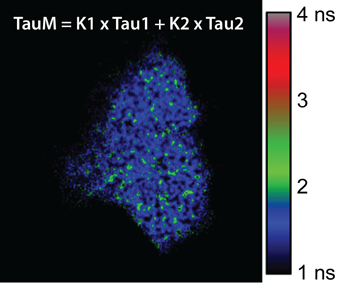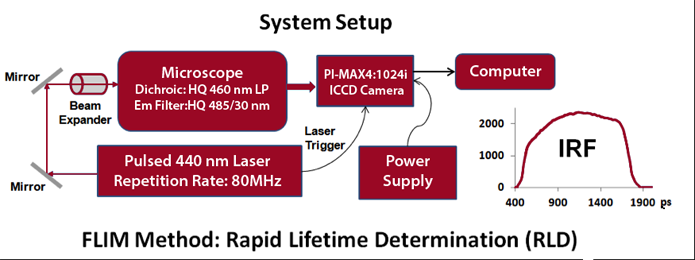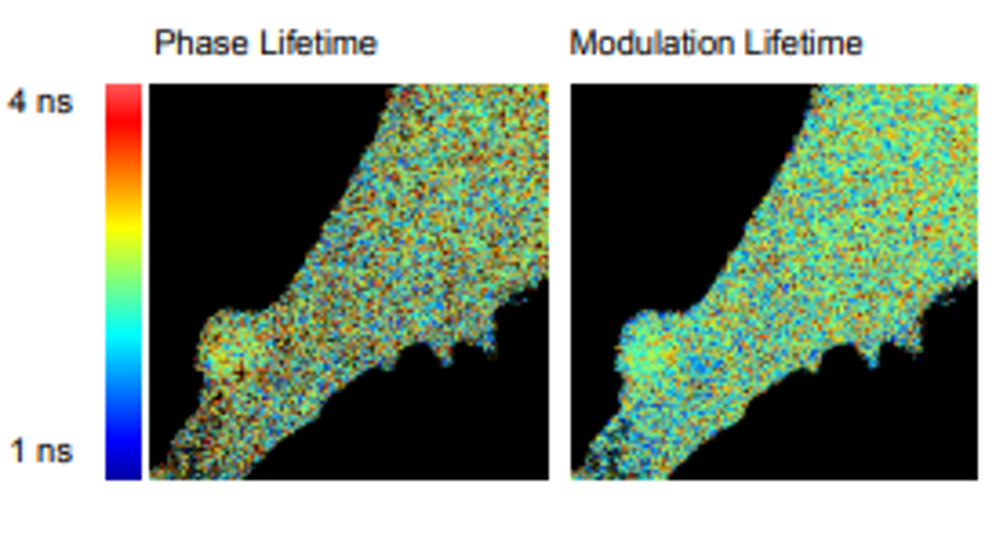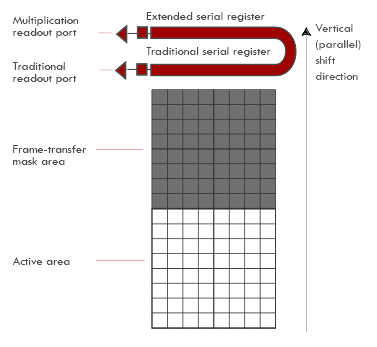Fluorescence Lifetime Imaging Microscopy (FLIM)
FLIM is a technique which measures the fluorescence lifetime of molecules. This is defined as the average time a molecule spends in an excited state before returning to the ground state. It is usually used to determine molecular dynamics with nanoscale resolution, predominately used with fluorescent molecules in cells, tissues, and whole animal models.
Fluorescence lifetime is dependent on changes within its local environment and conformation state, for example ionic concentration, pH, and lipophilicity. There are two primary implementations of FLIM:
- Time-domain FLIM; pulsed light source in conjunction with time-gated/time-correlated detection
- Frequency-domain FLIM – sinusoidally modulated light source with either a sinusoidally modulated ICCD for wide-field imaging or a modulated single-element detector for scanning/single-point detection.

Application Notes
Novel Time-Resolved FLIM Measurements Method

For years, fluorophore lifetimes were typically tens of nanoseconds and longer. Therefore, intensified CCD (ICCD) cameras with commercially available slow-gate and fast-gate image intensifiers capable of providing gate widths on the order of nanoseconds were sufficient for measuring and observing such phenomena effectively. Tens-of-nanoseconds gating allowed scientists to obtain several…Read Full Article
Wide-Field, Frequency-Domain FLIM Measurements Made Simple
Fluorescence lifetime imaging microscopy, or FLIM, encompasses several techniques for mapping the spatial distribution of excited-state lifetimes (i.e., fluorescence decay times) of emitting molecular species with nanosecond and microsecond temporal resolution. Images produced using fluorescence microscopy via FLIM, therefore, are based on the acquisition of decay-time data.
Regardless of the specific FLIM method used, the differences in the exponential decay time of a species’ fluorescence…Read Full Article

Technical Notes
emlCCD: The Ultimate in Scientific ICCD Technology

With the rapid expansion of research in areas such as nanotechnology, quantum computing, and combustion, the development of higher-performance time-gated cameras is becoming a necessity. This technical note describes the latest breakthrough in scientific intensified CCD (ICCD) technology: the world’s first emICCD…Read Full Article
